Buongiorno and welcome to RomeCabs Rome Travel Blog! Rainy days in Rome can be unexpected, especially during the spring and fall months when rain is more abundant than during the hot, dry summer and chilly winter. However, a rainy day in Rome doesn’t have to be a wasted day. Here are the three best things to do in Rome on a rainy day to make the most of the Eternal City when it rains out.
.
Best Things to Do in Rome on a Rainy Day
.
.

.
.
1. Visit Museums: A Perfect Rainy Day Activity
.
Rome is home to some of the world’s most incredible museums, each offering a unique glimpse into the city’s rich history and culture. Museums are an ideal way to spend a rainy day, allowing you to stay dry while exploring fascinating exhibits. Here are some top choices for a rainy day museum visit:
.
Visit the Capitoline Museums
Located on Capitoline Hill, the Capitoline Museums house a stunning collection of ancient Roman art and artifacts. The museums are divided into two main buildings: Palazzo dei Conservatori and Palazzo Nuovo. Highlights include the iconic Capitoline Wolf statue, the colossal statue of Constantine, and the ancient bronze sculpture of the She-Wolf. The museums also offer breathtaking views of the Roman Forum from their terraces, providing a perfect blend of indoor and outdoor experiences.
.
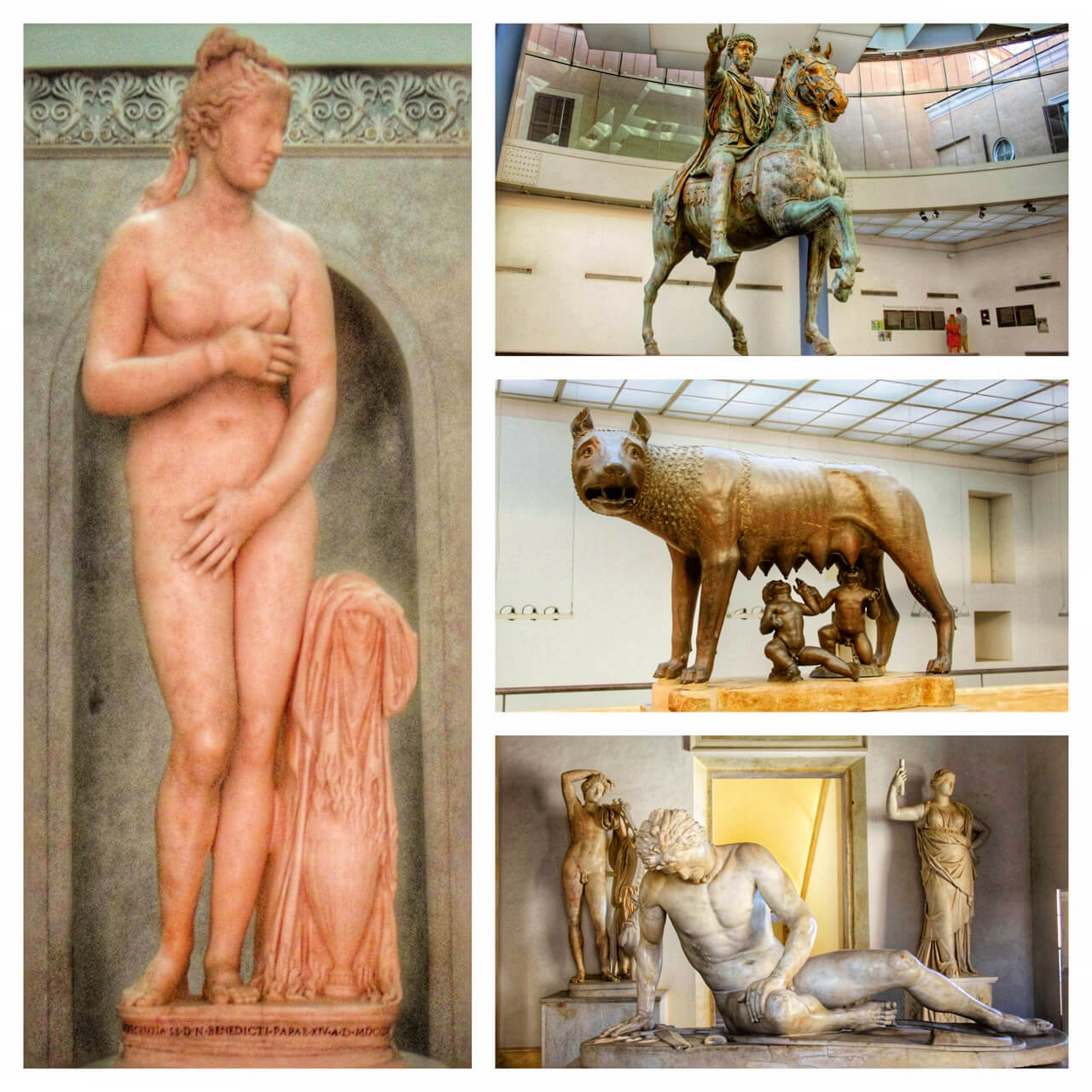
.
Palazzo Altemps
Part of the National Roman Museum, Palazzo Altemps is known for its impressive collection of classical sculptures housed in a Renaissance palace. The museum’s exhibits include works by Bernini and ancient sculptures from the Ludovisi and Altemps collections. Highlights include the Ludovisi Throne, a beautifully carved marble relief, and the Galatian Suicide, a dramatic Hellenistic sculpture.
.
National Roman Museum (Palazzo Massimo alle Terme)
This museum is a treasure trove of classical art, showcasing one of the world’s most important collections. Spread across several floors, the exhibits include intricate mosaics, ancient sculptures, and beautifully preserved frescoes. Notable pieces include the Boxer at Rest, a stunning Hellenistic bronze sculpture, and the Discus Thrower, a Roman marble copy of the famous Greek original. The museum’s close proximity to Termini Station makes it easily accessible, even on a rainy day.
.
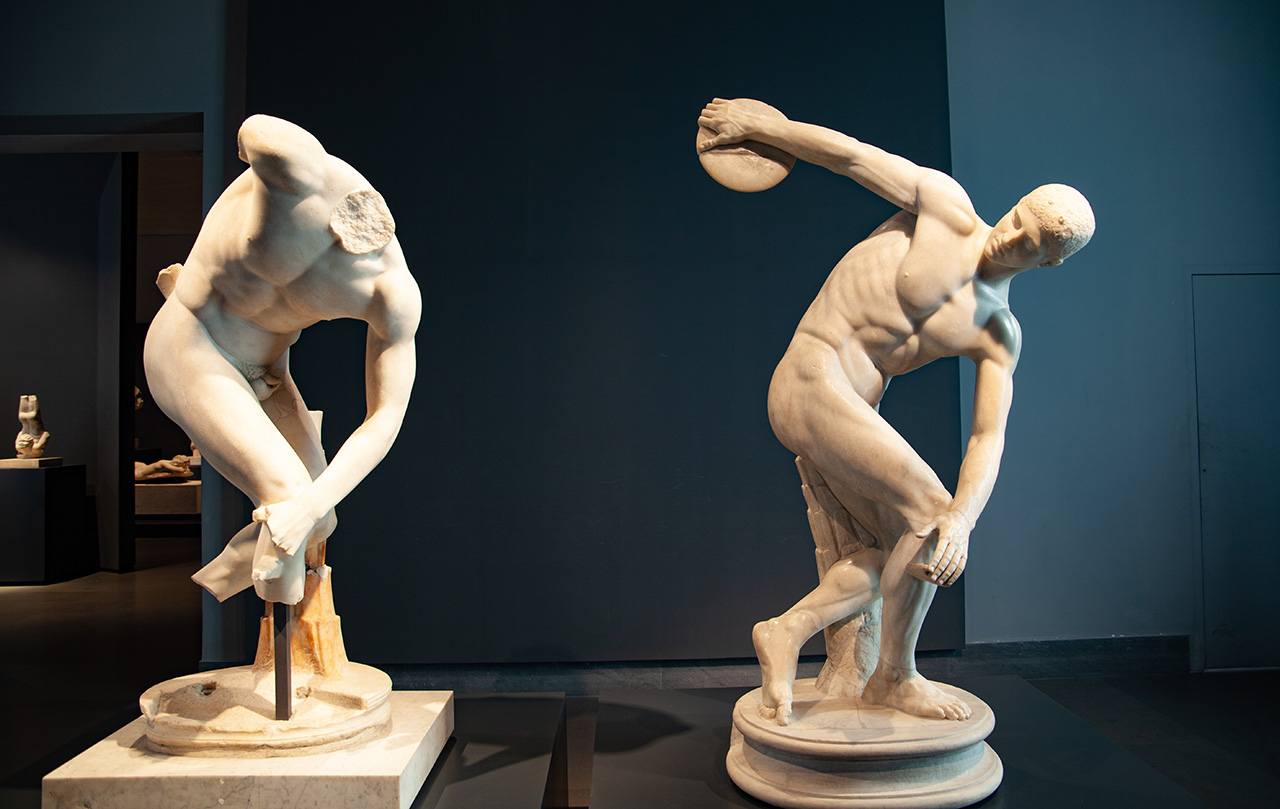
.
Palazzo Doria Pamphilj
This private collection, still owned by the Doria Pamphilj family, is housed in a stunning palace and includes works by Caravaggio, Velázquez, and other masters. The opulent rooms of the palace provide a beautiful backdrop for the art collection, and an audio guide narrated by a member of the family offers personal insights into the history and significance of the pieces on display.
.
National Etruscan Museum – Villa Giulia
Situated in the Villa Giulia, the National Etruscan Museum provides a fascinating look at the Etruscan civilization that predated the Romans. The museum’s collection includes pottery, sculptures, and artifacts that shed light on this mysterious culture. Highlights include the Sarcophagus of the Spouses, a beautifully crafted terracotta funerary monument, and the Pyrgi Tablets, which provide valuable insights into the Etruscan language and religion.
.

.
.
2. Visit Rome’s Historic Churches
.
Rome boasts nearly 1,000 churches, each with stunning architecture and artistic masterpieces. Visiting these churches is an excellent way to stay dry while exploring the city’s rich religious and cultural heritage. Here are some must-visit churches to explore:
.
Rome’s Best Churches in Historic Center
When the rain dampens your plans to explore Rome’s outdoor attractions, a visit to the city’s magnificent churches offers a perfect alternative. These sacred spaces are not only places of worship but also house incredible artworks and fascinating histories. Here are some of the most notable churches in the historic center of Rome that you can explore on a rainy day:
.
Santa Maria del Popolo
Located in the bustling Piazza del Popolo, Santa Maria del Popolo is renowned for its exceptional artworks by Caravaggio and Raphael. The church’s richly decorated interior is a testament to Renaissance art and architecture. The Chigi Chapel, designed by Raphael, is particularly noteworthy with its harmonious proportions and exquisite sculptures. Caravaggio’s dramatic paintings, “The Conversion of Saint Paul” and “The Crucifixion of Saint Peter“, are highlights that draw art enthusiasts from around the world. The church also features beautiful chapels and intricate frescoes that reflect the artistic splendor of its era.
.
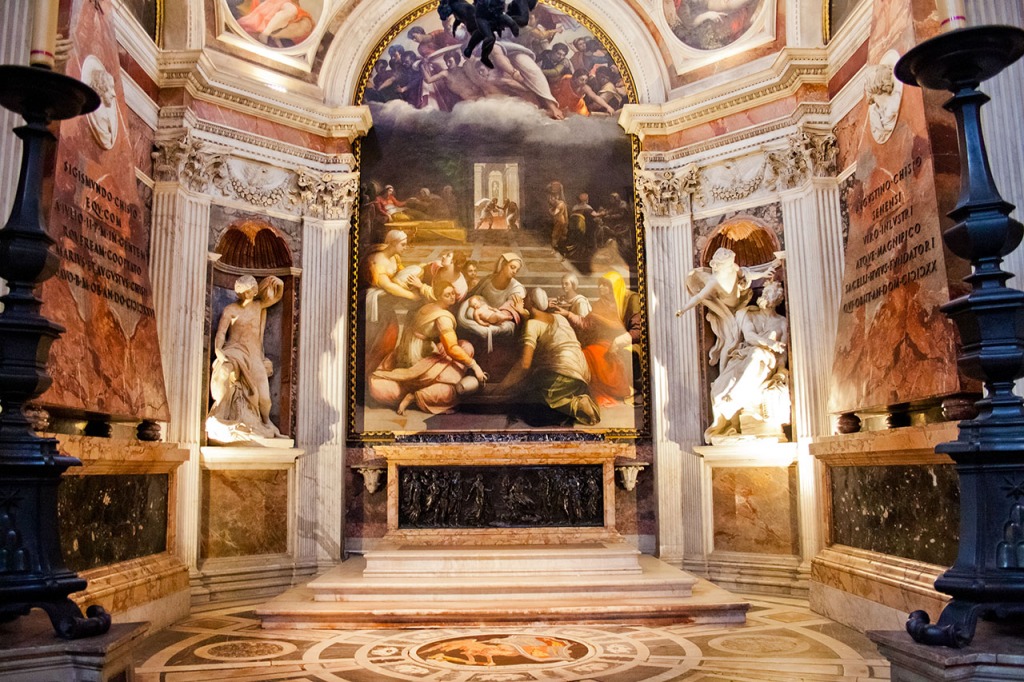
.
Santa Maria degli Angeli e dei Martiri
Santa Maria degli Angeli e dei Martiri stands out for its unique blend of ancient Roman and Renaissance architecture. Built within the ruins of the Baths of Diocletian, the church’s impressive design was executed by Michelangelo. The vast interior features soaring arches and incorporates the original Roman structure into its layout.
One of the most fascinating elements is the meridian line, an astronomical instrument used to determine the exact time of Easter. The combination of ancient history and Renaissance artistry makes this church a fascinating destination.
.
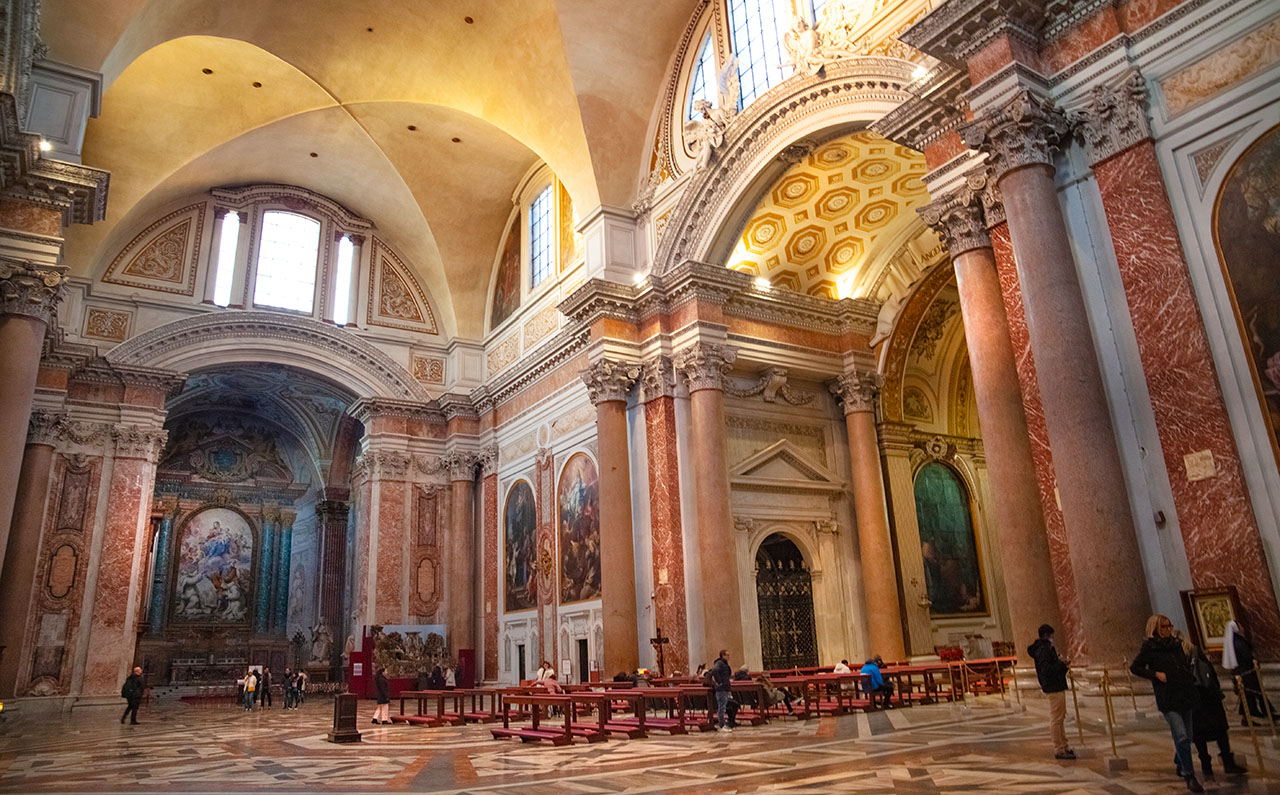
.
Trinità dei Monti
Perched atop the famous Spanish Steps, Trinità dei Monti offers breathtaking views of Rome. This elegant church, with its twin bell towers, is a peaceful retreat from the lively Piazza di Spagna below. Inside, visitors can admire beautiful frescoes, including works by Daniele da Volterra, a pupil of Michelangelo. The church’s serene atmosphere and stunning artistic details provide a perfect escape from the rain.
.
Santa Maria della Vittoria
Santa Maria della Vittoria is home to Bernini’s famous sculpture, “The Ecstasy of Saint Teresa“. This remarkable work of art captures the mystical experience of Saint Teresa of Ávila, depicted with stunning emotional intensity. The sculpture is set within the ornate Cornaro Chapel, surrounded by vivid frescoes and gilded decorations. The church itself, with its richly decorated interior and baroque architecture, is a visual delight that offers a profound spiritual experience.
.
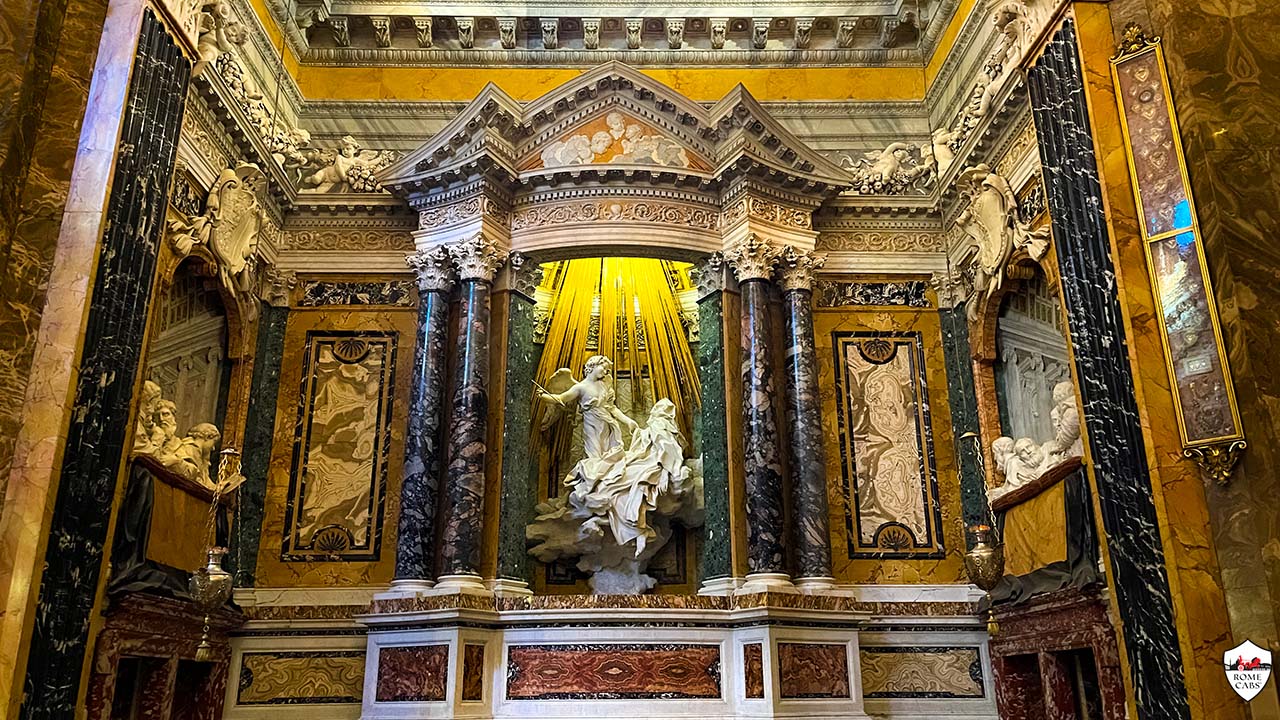
.
.
San Luigi dei Francesi
Dedicated to St. Louis of France, San Luigi dei Francesi is celebrated for its collection of stunning Caravaggio paintings. The Contarelli Chapel within the church houses three of Caravaggio’s masterpieces depicting the life of St. Matthew: “The Calling of Saint Matthew”, “The Inspiration of Saint Matthew,” and “The Martyrdom of Saint Matthew”.
These works are renowned for their dramatic use of light and shadow, bringing the biblical scenes to life. The church’s baroque interior, with its lavish decorations, complements the artistic brilliance of Caravaggio’s paintings.
.
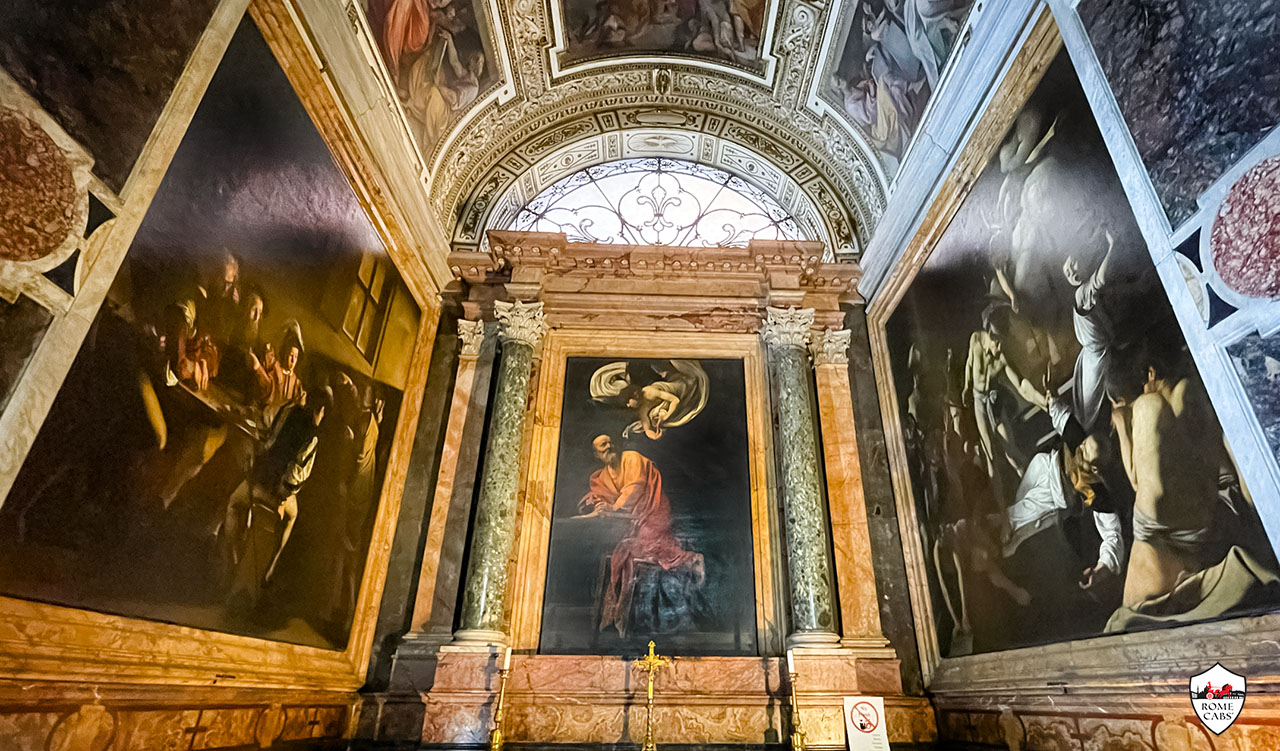
.
Sant’Ignazio di Loyola
Sant’Ignazio di Loyola is known for its magnificent trompe-l’œil ceiling, which creates the illusion of a domed roof. This optical illusion, painted by Andrea Pozzo, is a masterpiece of baroque art that astonishes visitors with its depth and realism. The church’s grand interior is adorned with elaborate frescoes, statues, and marble columns, making it a visual feast.
The stunning artistic achievements found here reflect the grandeur and creativity of the Baroque period.
.
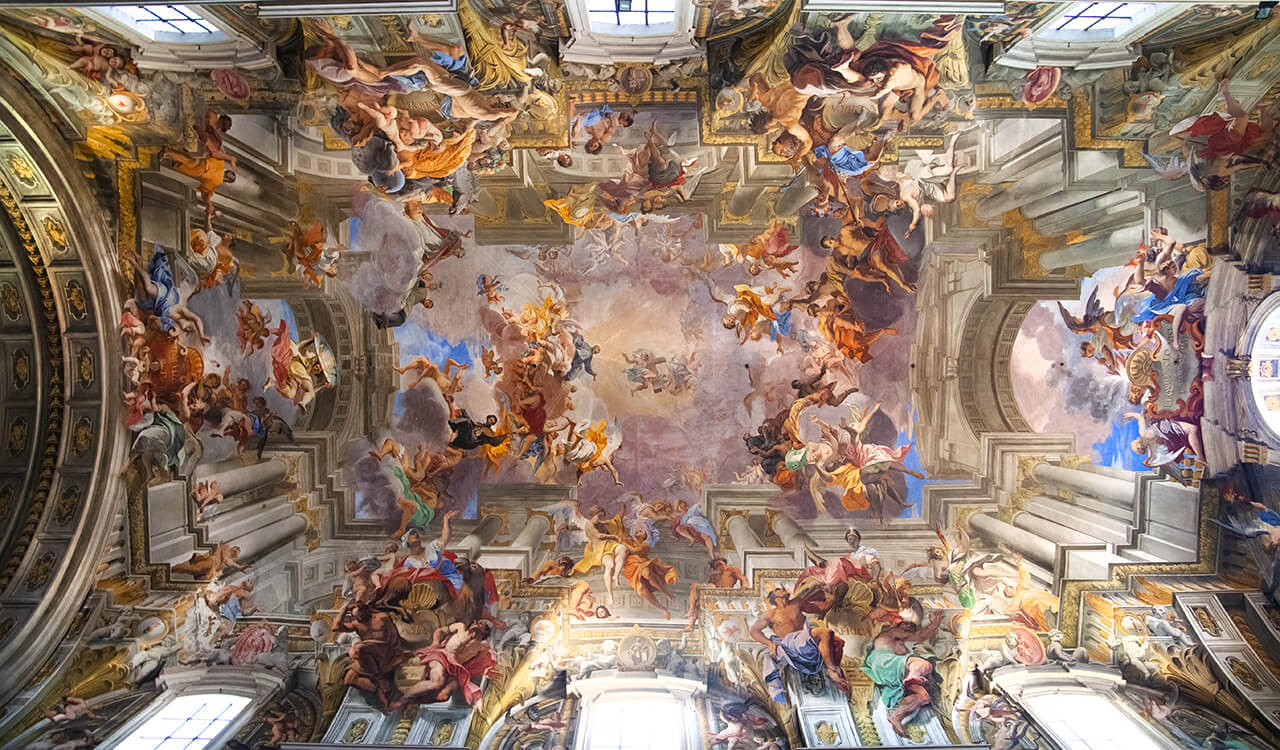
.
Santa Maria in Cosmedin
Santa Maria in Cosmedin is best known for housing the Bocca della Verità (Mouth of Truth), a marble mask that has become a popular tourist attraction. According to legend, the mask will bite the hand of anyone who tells a lie while their hand is in its mouth. The church’s simple exterior belies a beautiful interior adorned with medieval mosaics and frescoes. The intricate artwork and serene atmosphere make it a peaceful refuge from the rain and a fascinating place to explore.
.
San Pietro in Vincoli Basilica (St. Peter in Chains)
San Pietro in Vincoli is renowned for housing one of Michelangelo’s most famous sculptures, the statue of Moses, which is part of the tomb of Pope Julius II.
The statue of Moses is a masterpiece of Renaissance art, showcasing Michelangelo’s extraordinary skill in sculpting. The figure is depicted with a majestic and powerful presence, seated with the Tablets of the Law under one arm. The details, such as the flowing beard and the intense expression, are striking.
The church is named after the relic of the chains that are believed to have bound St. Peter during his imprisonment in Jerusalem. These chains are displayed in a reliquary under the main altar, attracting many pilgrims who come to venerate them.
In addition to Michelangelo’s Moses, the church contains other notable artworks, including frescoes, altarpieces, and statues. The interior, though relatively simple in comparison to some of Rome’s grander churches, exudes a serene and sacred atmosphere.
.
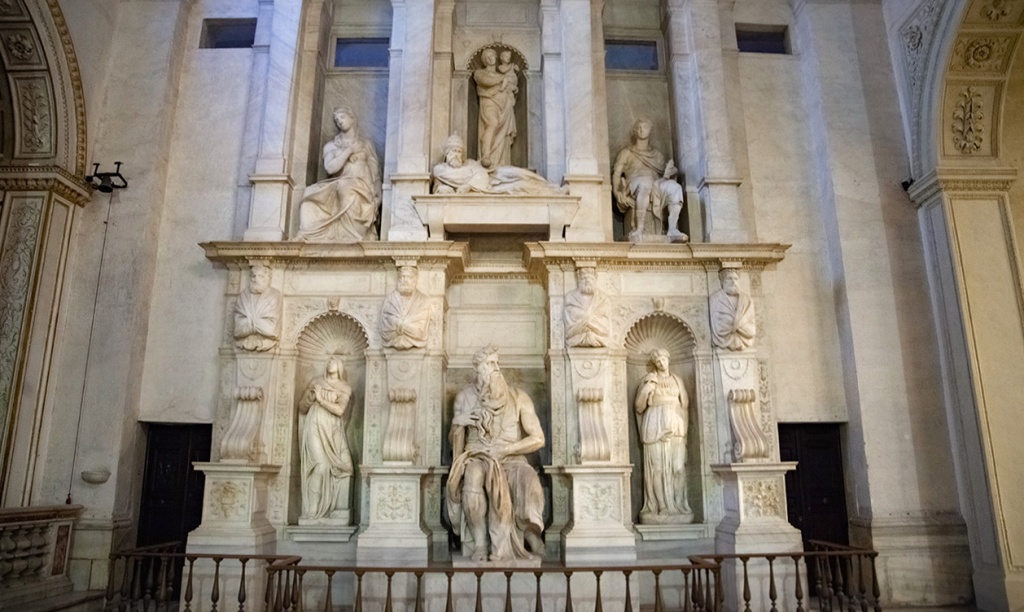
.
.
Must-See Churches in Trastevere
.
Trastevere, one of Rome’s most charming neighborhoods, is known for its vibrant atmosphere, narrow cobblestone streets, and colorful buildings. Amidst this lively district are some of the city’s most beautiful and historic churches, offering visitors a serene escape and a glimpse into Rome’s rich spiritual and artistic heritage. On a rainy day, exploring these sacred sites can be a delightful and enriching experience.
.
Santa Maria in Trastevere
Santa Maria in Trastevere is one of the oldest churches in Rome, with origins dating back to the 3rd century. It stands as a testament to the early Christian community in the city and is renowned for its breathtaking mosaics, which are considered some of the finest examples of medieval art in Rome. The church’s facade is adorned with a beautiful 12th-century mosaic depicting the Virgin Mary enthroned and nursing the Christ Child, a rare and tender portrayal of the Madonna.
Inside, the church’s golden mosaics continue to dazzle. The apse is particularly striking, featuring mosaics by Pietro Cavallini that illustrate scenes from the life of the Virgin Mary. The central panel, “The Coronation of the Virgin“, is a masterpiece of medieval art, showcasing intricate details and vibrant colors. The mosaics reflect the Byzantine influence on Roman art during this period and are a must-see for art enthusiasts.
The church also boasts a peaceful and contemplative ambiance, with its richly decorated interior, rows of ancient columns, and beautifully detailed ceilings. The central nave is flanked by a series of chapels, each housing impressive artworks and altars. Santa Maria in Trastevere is not only a place of worship but also a haven for those seeking to experience the spiritual and artistic heritage of Rome.
.
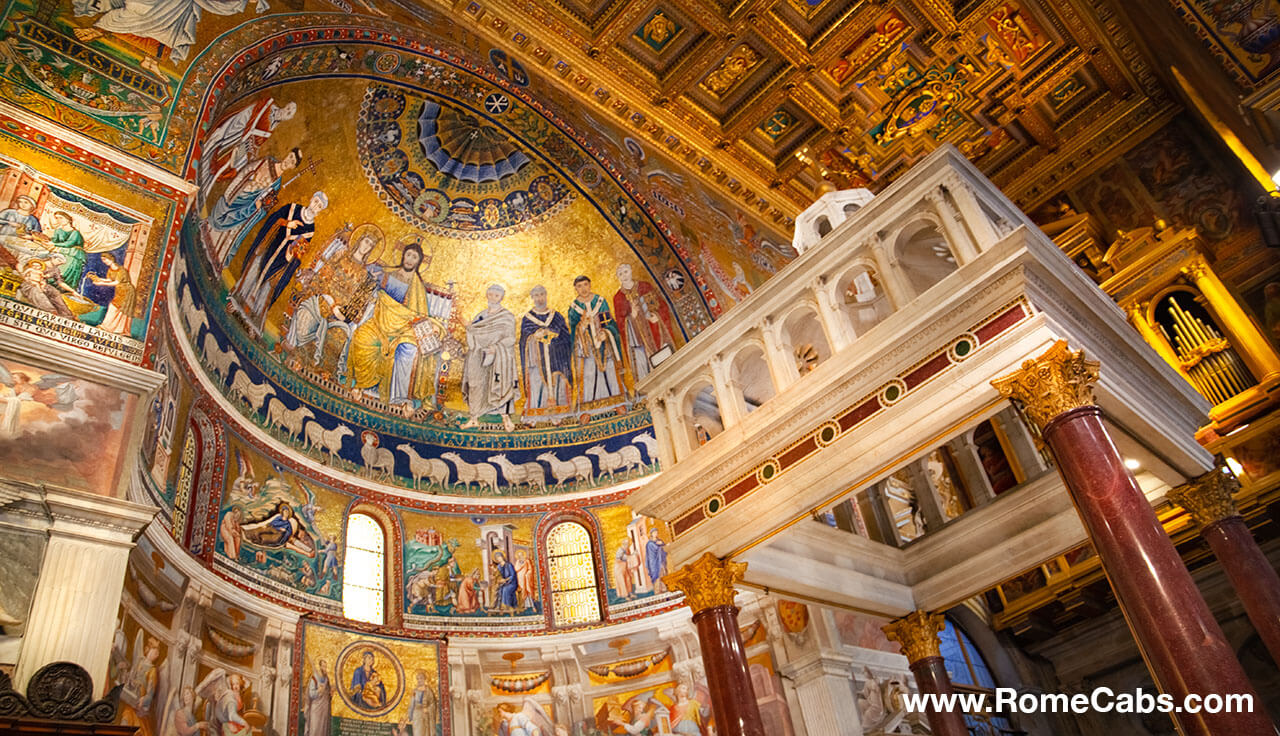
.
.
Santa Cecilia in Trastevere
Santa Cecilia in Trastevere is dedicated to Saint Cecilia, the patron saint of music, and is another jewel in the crown of Trastevere’s historic churches. Founded in the 5th century, the church has undergone numerous restorations and transformations over the centuries, each adding to its rich architectural and artistic legacy.
The exterior of the church, with its elegant Romanesque bell tower, belies the splendor within. The interior is known for its stunning frescoes and impressive artworks. One of the highlights is the fresco cycle by Pietro Cavallini in the choir gallery, depicting the Last Judgment. These frescoes are considered masterpieces of medieval art, showcasing Cavallini’s skill in creating lifelike figures and expressive faces.
Another remarkable feature of Santa Cecilia is the statue of the saint herself, sculpted by Stefano Maderno. The statue, located under the main altar, depicts Saint Cecilia in the position in which her body was reportedly found, emphasizing her martyrdom and piety. Maderno’s work is noted for its realism and emotional depth, making it a poignant tribute to the saint.
The church’s crypt is a fascinating part of the visit, containing ancient Roman remains and early Christian art. The crypt is believed to be the site of Saint Cecilia’s original burial and includes intricate mosaics and frescoes that date back to the early Christian era. The crypt offers a glimpse into the early history of Christianity in Rome and the enduring legacy of Saint Cecilia.
.
Churches Outside the Historic Center of Rome
.
Rome’s historic center is renowned for its abundance of stunning churches, but beyond this central area, there are several other magnificent and historically significant churches that are well worth a visit. These churches not only boast architectural splendor but also house important relics and artworks that offer deep insights into Rome’s religious and cultural heritage. Here are some must-see churches located outside the historic center:
.
San Giovanni in Laterano (St. John Lateran)
San Giovanni in Laterano, also known as St. John Lateran, is the cathedral church of Rome and the official ecclesiastical seat of the Pope. It is one of the four major basilicas of Rome and is often referred to as the “Mother of all Churches” due to its significance in the Catholic Church.
The grand facade of San Giovanni in Laterano is an architectural masterpiece, featuring an impressive array of statues and intricate details. The facade was designed by Alessandro Galilei in the 18th century and is a striking example of Baroque architecture.
Inside, the basilica is adorned with magnificent decorations, including stunning mosaics, frescoes, and gilded ceilings. The central nave is flanked by colossal statues of the Apostles, created by some of the most renowned artists of the Baroque period.
Adjacent to the basilica is the Lateran Palace, which served as the residence of the Popes for over a thousand years before the papal seat was moved to the Vatican.
The Holy Stairs (Scala Sancta): Located nearby is the Holy Stairs, which are believed to be the very steps that Jesus climbed during his trial before Pontius Pilate. These steps were brought to Rome by St. Helena, the mother of Emperor Constantine, and are a significant site of pilgrimage. Devotees ascend the 28 steps on their knees in reverence.
.
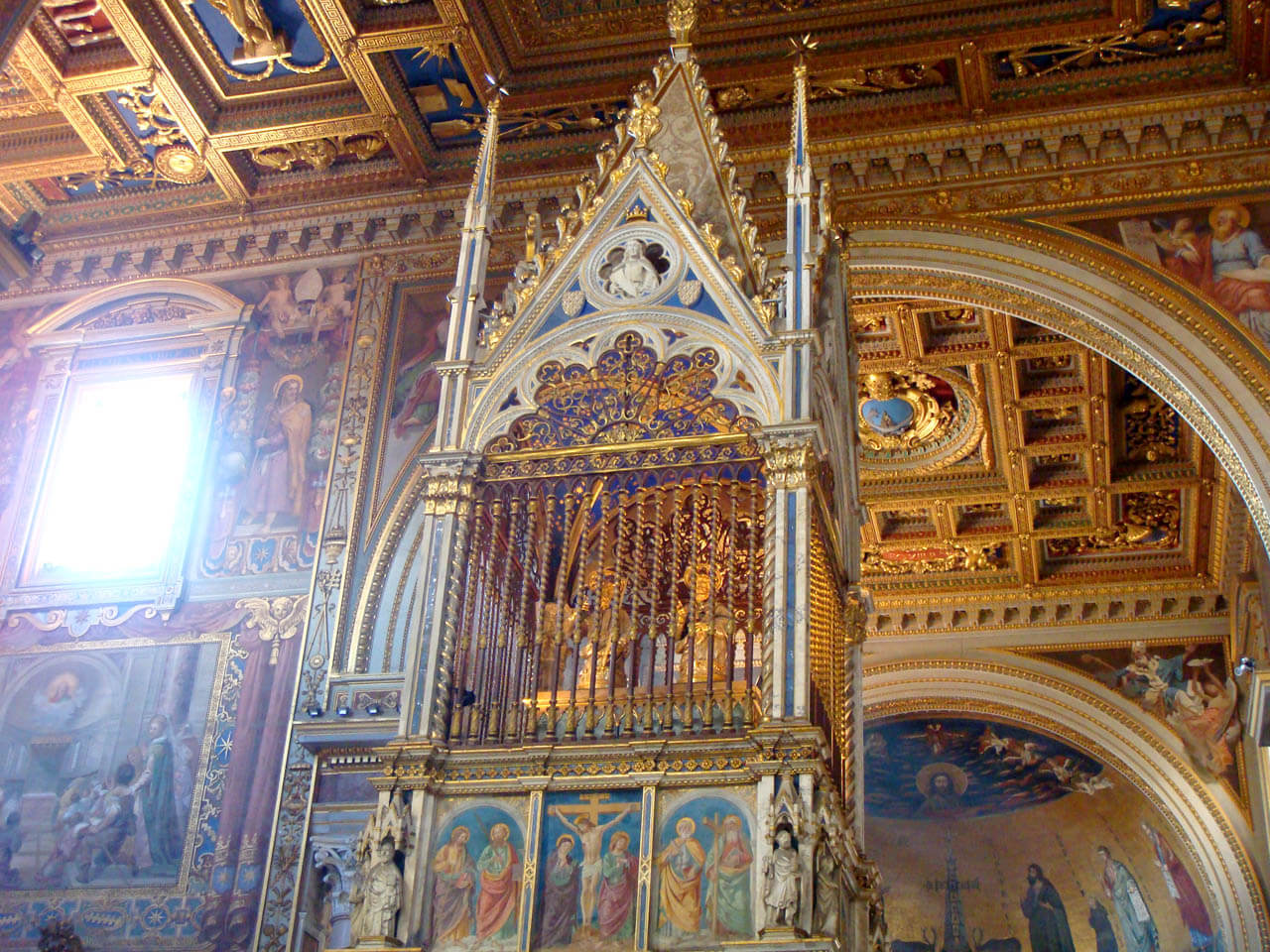
.
Santa Croce in Gerusalemme (Holy Cross in Jerusalem)
Santa Croce in Gerusalemme is a deeply spiritual and serene church that houses some of the most important relics of the Passion of Christ, making it a significant place of pilgrimage.
The church contains several relics that are believed to be associated with the Crucifixion of Jesus. These include fragments of the True Cross, a nail from the Crucifixion, thorns from the Crown of Thorns, and the Titulus Crucis (the inscription that hung above Jesus’ head on the cross). These relics are housed in a special chapel within the church, known as the Chapel of the Relics.
The church’s interior is peaceful and contemplative, providing a tranquil space for prayer and reflection. The serene atmosphere is enhanced by the beautiful Baroque decorations and the soft light filtering through the stained-glass windows.
Santa Croce in Gerusalemme was founded by St. Helena in the 4th century after she returned from her pilgrimage to the Holy Land. The church was built to house the relics she brought back, and its foundation includes soil from Jerusalem, giving it its name.
.
Basilica of Saint Paul Outside the Walls
One of Rome’s four major basilicas, Saint Paul Outside the Walls is dedicated to St. Paul the Apostle, whose tomb lies beneath the church’s main altar. This basilica is a magnificent example of early Christian architecture and artistry.
The facade of the basilica is adorned with a large mosaic depicting Christ surrounded by Saints Peter and Paul, along with other saints. Inside, the apse features a beautiful mosaic of Christ in Glory, created in the 13th century. The basilica is built over the burial place of St. Paul, making it a significant pilgrimage site. The tomb is marked by a marble baldachin (canopy) supported by four alabaster columns.
The interior of the basilica is vast and awe-inspiring, with its long nave lined with rows of Corinthian columns. The basilica’s grandeur is further accentuated by its high ceilings and the extensive use of marble and gold.
The cloister of Saint Paul Outside the Walls is a tranquil oasis, featuring beautifully sculpted columns and lush greenery. It offers a peaceful retreat for contemplation and a break from the bustling city.
.
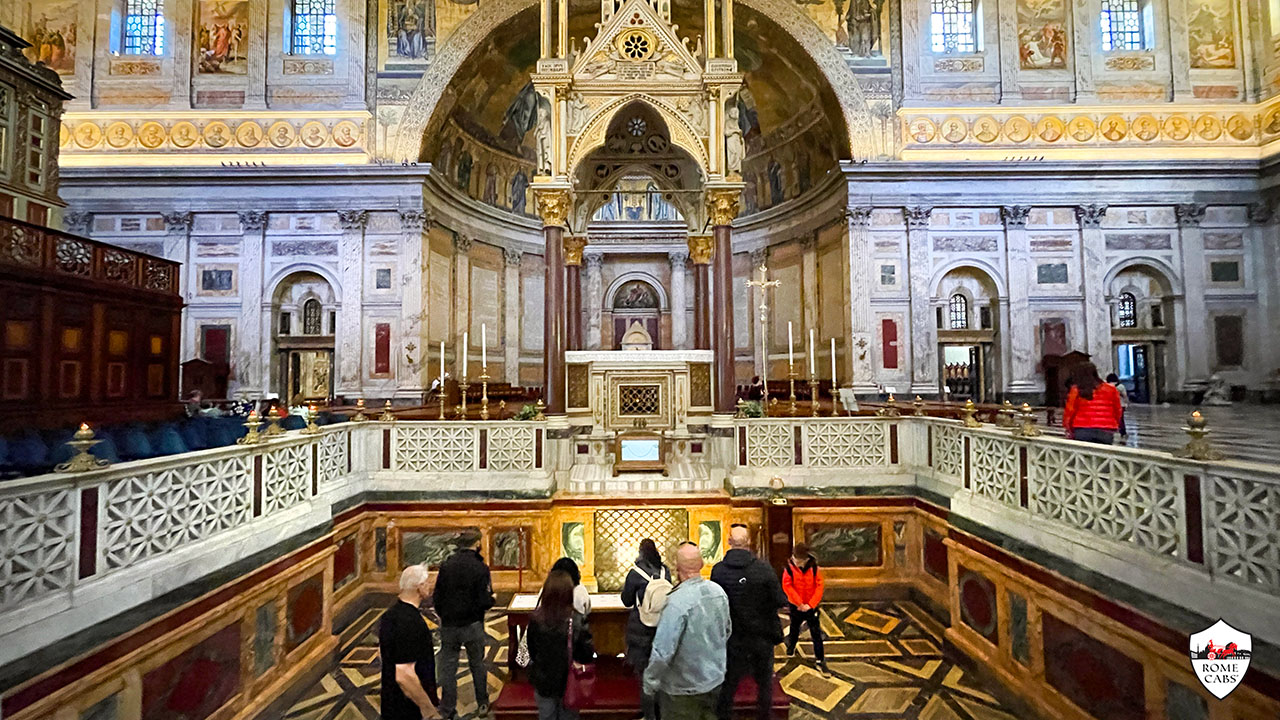
.
.
3. Book Rome Limousine Tours by Car with RomeCabs
.
One of the best ways to explore Rome on a rainy day is to book a tour by car. RomeCabs and our sister company, Stefano Rome Tours, offer a variety of exciting tours that let you see the city’s highlights without braving the rain. Here are some of the benefits and highlights of taking a tour by car:
.
Stay Dry and Comfortable and book a Rome tour by car
By booking a tour by car, you can stay dry and comfortable while exploring Rome. Our luxury vehicles are equipped with climate control and comfortable seating, ensuring a pleasant experience regardless of the weather. You won’t have to worry about getting soaked while walking from place to place or standing in the rain waiting for buses. Instead, you can relax and enjoy the sights from the comfort of your car.
.
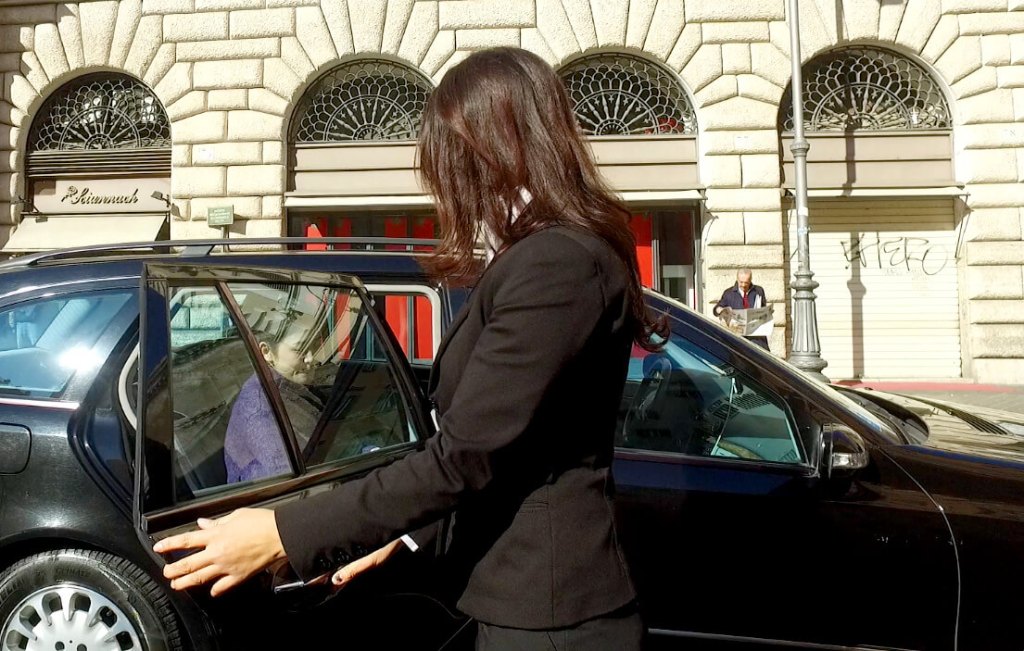
.
.
See More of Rome in Less Time on a driving Tour of Rome
Booking a tour by car ensures you will see more of Rome in less time. You won’t waste precious hours searching for elusive taxis or waiting for public transportation. Our drivers know the best routes to take, allowing you to visit multiple attractions efficiently. This means you can cover more ground and make the most of your time in the city, even on a rainy day.
.

.
.
What you can see on a Rome Tour by Car with RomeCabs
.
Outdoor View of the Colosseum and Roman Forum
One of the most iconic sights in Rome, the Colosseum, and the nearby Arch of Constantine can be fully appreciated even from the outside. Your driver can drop you off and pick you up near Colosseum Square, allowing you to take in the grandeur of these ancient structures without the hassle of navigating crowded streets in the rain. Enjoy the impressive views and take stunning photographs of these historical landmarks.
.
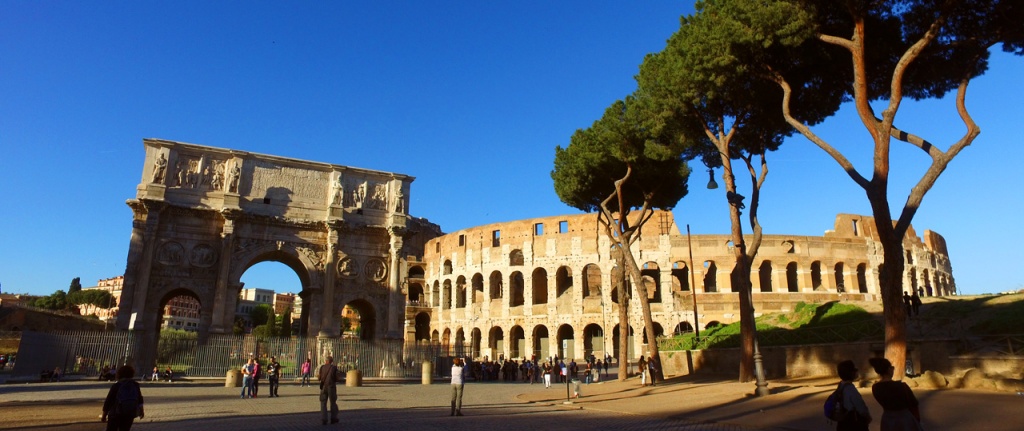
.
Piazza Navona and the Pantheon
Discover the beauty of Piazza Navona, a vibrant square known for its Baroque architecture, stunning fountains, and lively atmosphere. Take in the intricate details of the Fontana dei Quattro Fiumi (Fountain of Four Rivers) and the surrounding historic buildings. Just a short drive away, visit Piazza della Rotonda for an outside view of the magnificent Pantheon. This ancient temple-turned-church boasts a remarkable dome and impressive columns, making it a must-see even on a rainy day.
.
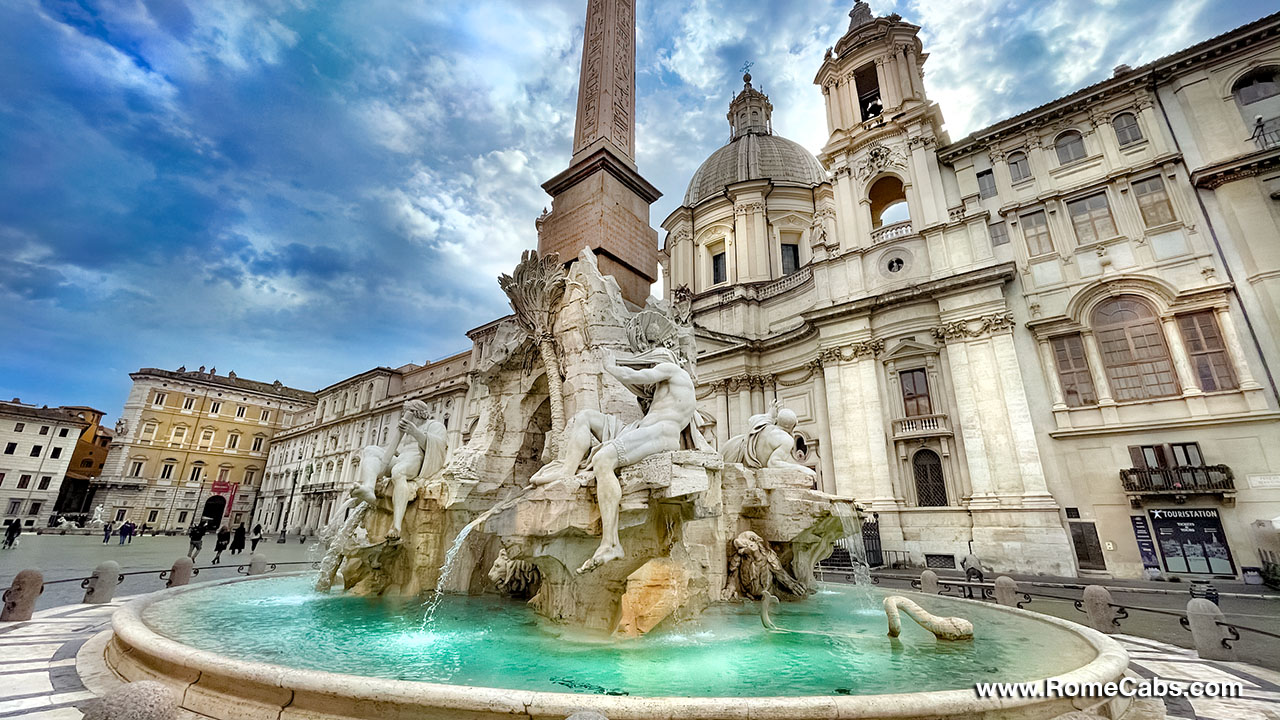
.
Trevi Fountain
No visit to Rome is complete without seeing the Trevi Fountain, one of the most famous fountains in the world. Your driver can take you close to this iconic landmark, where you can admire the intricate sculptures and the mesmerizing flow of water. Don’t forget to toss a coin into the fountain to ensure your return to Rome.
.
The Spanish Steps / Piazza di Spagna
Another must-see landmark is the Spanish Steps, a majestic staircase that connects Piazza di Spagna with the Trinità dei Monti church. Your driver can drop you off nearby so you can climb the steps and enjoy the panoramic views of Rome from the top. The steps are also a great place to sit and take in the bustling atmosphere of the city.
.
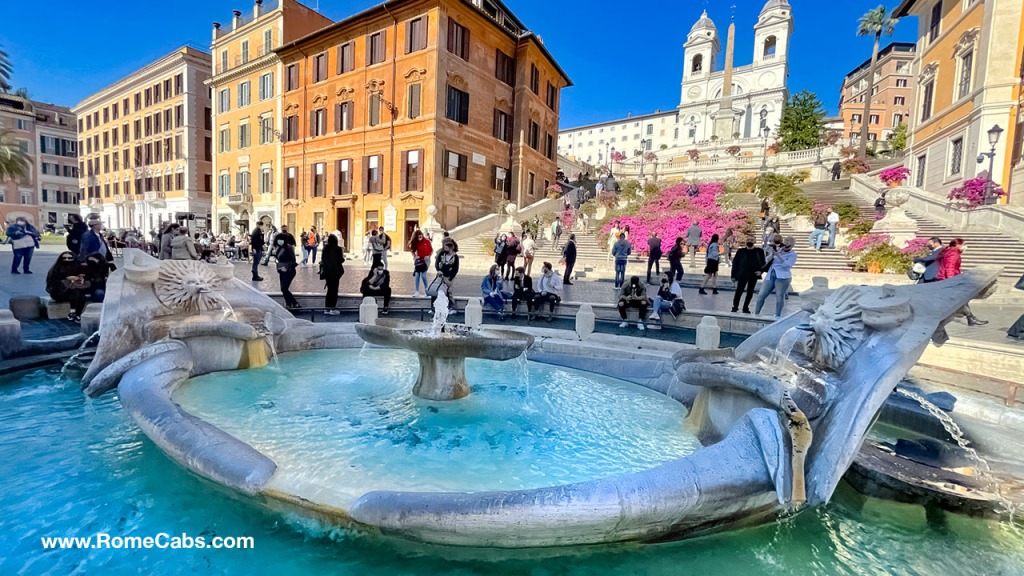
.
St. Peter’s Square
Visit the heart of Vatican City, St. Peter’s Square, where you can marvel at the grandeur of St. Peter’s Basilica and the surrounding colonnades. Your driver can provide insightful information about the history and significance of this holy site while you stay dry and comfortable in the car.
.
Trastevere
Explore the charming neighborhood of Trastevere, known for its narrow streets, colorful buildings, and lively atmosphere. This area is a delightful mix of old and new, with ancient churches and modern cafes coexisting side by side. Your driver can recommend the best places to visit and dine in this vibrant area, ensuring you experience the local culture and cuisine.
.
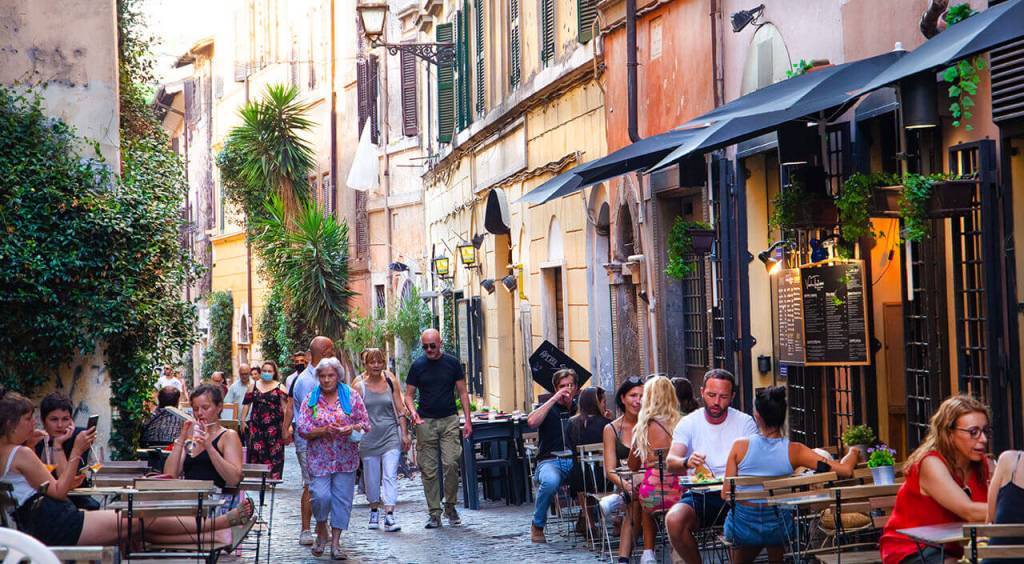
.
Off-the-Beaten-Path Places in Rome
Discover hidden gems and lesser-known attractions that are off the usual tourist trail. Your driver can take you to unique and interesting places such as Aventine Hill and Janiculum Hill, where you can enjoy stunning views of Rome and visit serene spots away from the crowds. These locations offer a different perspective on the city and are perfect for those looking to explore beyond the typical tourist destinations.
.
.
.
Visit Churches Not Easily Reached on Foot or Public Transportation
Rome is home to many breathtaking churches that are not easily reached on foot or public transportation. One such gem is St. Paul Outside the Walls, a magnificent basilica that stands as one of the four major papal basilicas of Rome.
Booking a tour by car in Rome offers a unique and comfortable way to explore the city’s most important and beautiful sights, especially on a rainy day. From iconic landmarks like the Colosseum and Trevi Fountain to charming neighborhoods like Trastevere, and off-the-beaten-path locations such as Aventine Hill, a car tour allows you to experience the best of Rome without the hassle of public transportation or walking in the rain.
Enjoy a personalized and flexible itinerary, expert guidance from knowledgeable drivers, and the opportunity to discover hidden gems and lesser-known attractions. Embrace the rainy weather and make the most of your time in the Eternal City with a luxurious and informative car tour.
Rainy days in Rome can be a wonderful opportunity to explore the city’s indoor attractions and enjoy a comfortable and informative tour by car. Whether you’re visiting world-class museums, discovering historic churches, or taking a customized car tour, there are plenty of ways to make the most of a rainy day in Rome. So, don’t let the rain dampen your spirits—embrace it and enjoy the rich history and culture that the Eternal City has to offer.
.
* Find RomeCabs online also on:
RomeCabs Facebook: https://www.facebook.com/RomeCabsToursAndTransfers
RomeCabs Pinterest: https://www.pinterest.it/romecabs
RomeCabs Twitter: https://twitter.com/RomeCabs
RomeCabs Instagram: https://www.instagram.com/romecabs/
RomeCabs Flickr Photo Gallery: https://www.flickr.com/photos/romecabs/
.
.
.
.

